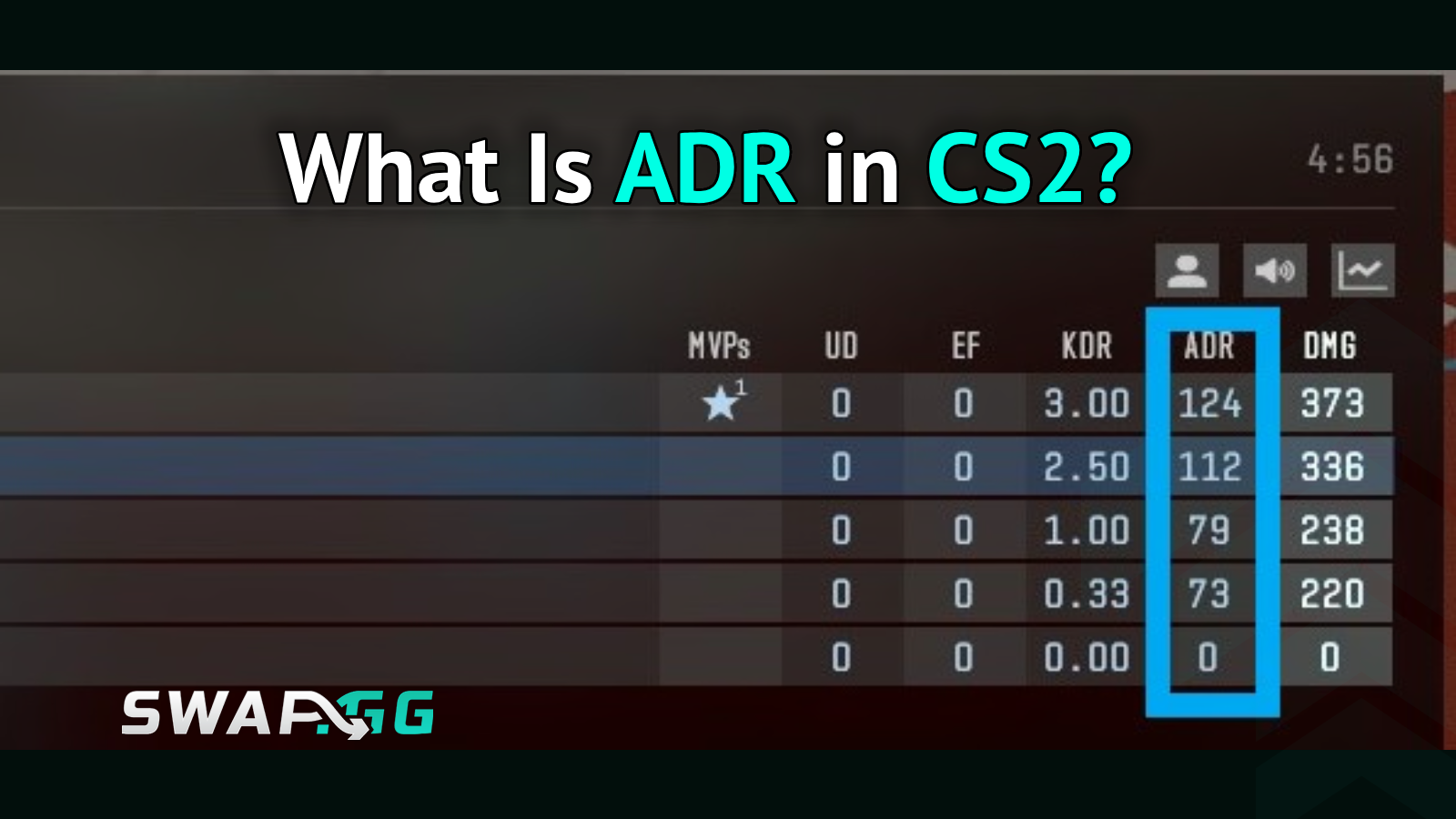What Is ADR in CS2? Why It Shapes Wins

Geplaatst op in CS2

What is ADR in CS2? This vital stat shows the average damage a player inflicts per round and gives a good view of your impact on more than just kills. At Swap.gg, we also get to observe directly how the knowledge of such metrics as ADR will enable players to optimize their strategies and improve their performance in Counter-Strike 2. This post will answer all of these questions and explain how ADR actually works, why it is superior to other statistics, and how to actually increase it in order to achieve better match outcomes.
Breaking Down ADR: The Basics
ADR is the short name of Average Damage per Round, and it is a very simple formula, which involves the sum of the damage caused to enemies divided by the number of rounds fired. As an example, breaking 1,500 damage in 20 rounds would result in your ADR being 75. At the end of each match, this figure is displayed on the scoreboard, beside kills, deaths, and assists, providing people with a rough overview of contributions.
In any case, ADR encompasses any damage, whether it be a headshot with an AWP or damage dealt to the chips by a grenade, and every small bit of damage counts toward the final figure.
Why ADR Matters More Than You Think
Kills may take the glory, but ADR tells the entire truth about what you did in the team. A player who has a high ADR will always push the enemies to hard positions or retreat to low health to create opportunities that can be exploited by other players. Conversely, low ADR may be an indication of bad positioning or missed chances, even though you are getting assists.
The thing is that in competitive scenes, pros want to achieve ADRs of 80 or 90, as it is directly related to winning rounds. Plus, it helps in scouting talent for teams; a steady, high ADR shows reliability under fire.
To make this clearer, consider this table summarizing typical ADR ranges and what they imply for performance levels in CS2:
This breakdown, based on community insights from sites like ProSettings.net, shows how ADR benchmarks stack up. Fair enough, these numbers can vary by rank or map, but they provide a solid starting point.
How CS2 Calculates ADR Step by Step
The game counts damage per round, and it is updated at the end of every round. Utility damage, such as flashes or Molotovs, should also be counted, provided there is an enemy hit. But self-damage or team damage does not come into play, and the focus remains on offensive contributions. That’s why learning to use utility throws can covertly increase your ADR without gunfighting as the only means. We suggest reviewing your ADR in the in-game scoreboard or third party applications such as Total CS to understand it more thoroughly.
Tips to Improve Your ADR Right Away
Boosting ADR starts with fundamentals, such as improving aim through deathmatch servers or aim trainers. Position yourself smarter; hold angles that allow for early picks or trades. In the meantime, add utility in a more helpful way, e.g., HE grenades to destroy the post after planting or flashes to establish peeks.
Let’s be real, practicing crosshair placement and recoil control pays off huge dividends in consistent damage. Another key: make sure to review demos. Watch where you miss damage opportunities, then adjust. For instance, if you're dying too early, work on survival to rack up more hits per round. With these tweaks, you'll see your ADR climb, making you a more valuable teammate.
ADR in the Bigger Picture of CS2 Stats
Where ADR is good at emphasizing damage dealers, it complements other statistics such as K/D ratio or headshot percentage to provide a balanced picture. There are those players who are good in entry frags with burst damage, pushing ADR high, and there are those who are at the bottom but win with setups, supports. On the other hand, not considering ADR at all loses the growth opportunity.
At Swap.gg, we invite players to focus more on the fun and less on the stats, and by having players trade cool skins, it enables us to add additional fun to it. The fact is that you not only sharpen your skills when you learn ADR, but you also learn to appreciate the depth of the game.
To sum up, ADR is a useful resource to estimate and improve your CS2 skills. You can then place yourself in better positions by understanding its calculation, importance, and improvement measures.
Geplaatst op in CS2
![[THUMBNAIL] Is 7.1 Surround Good for CS2? The Reality Behind Virtual Audio](https://swap.gg/cdn-cgi/image/f=auto/https://blog.swap.gg/content/images/2025/12/Is-7.1-Surround-Good-for-CS2_.png)
![[THUMBNAIL] Is CS2 CPU or GPU-intensive? What Hardware Actually Matters](https://swap.gg/cdn-cgi/image/f=auto/https://blog.swap.gg/content/images/2025/12/Is-CS2-CPU-or-GPU-intensive_.png)
![[THUMBNAIL] What Is the Cheapest Knife in CS2? Your Complete Budget Guide](https://swap.gg/cdn-cgi/image/f=auto/https://blog.swap.gg/content/images/2025/12/cheapest-knives.png)